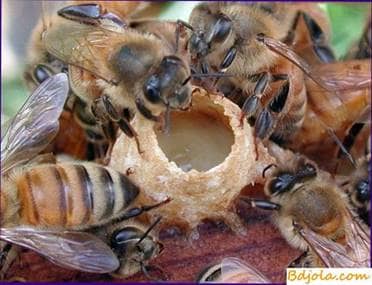
The latest studies show that bees of one family during their stay in the hive are in constant “feed” contact with each other. Beginning from the first day of life, the young bee not only receives food from the bees surrounding it, but itself, albeit to a lesser extent, gives it to other bees. So, in the summer, a bee in a hive during the day usually feeds dozens of bees to other bees tens of times and takes food from them dozens of times. The more active is the activity of the bee family, the more this exchange of food takes place more intensively.
Precise studies have shown that a substance taken from several bees can be found in 50% of bees in a day in a day, and after two days it was found in all feeding larvae.
This constant exchange of food is the most important form of the vital connection between worker bees. It as though unites all members of family in a harmonious biological whole.
Пчела каменщица. Заменитель перги для пчел.
The bee family and its composition